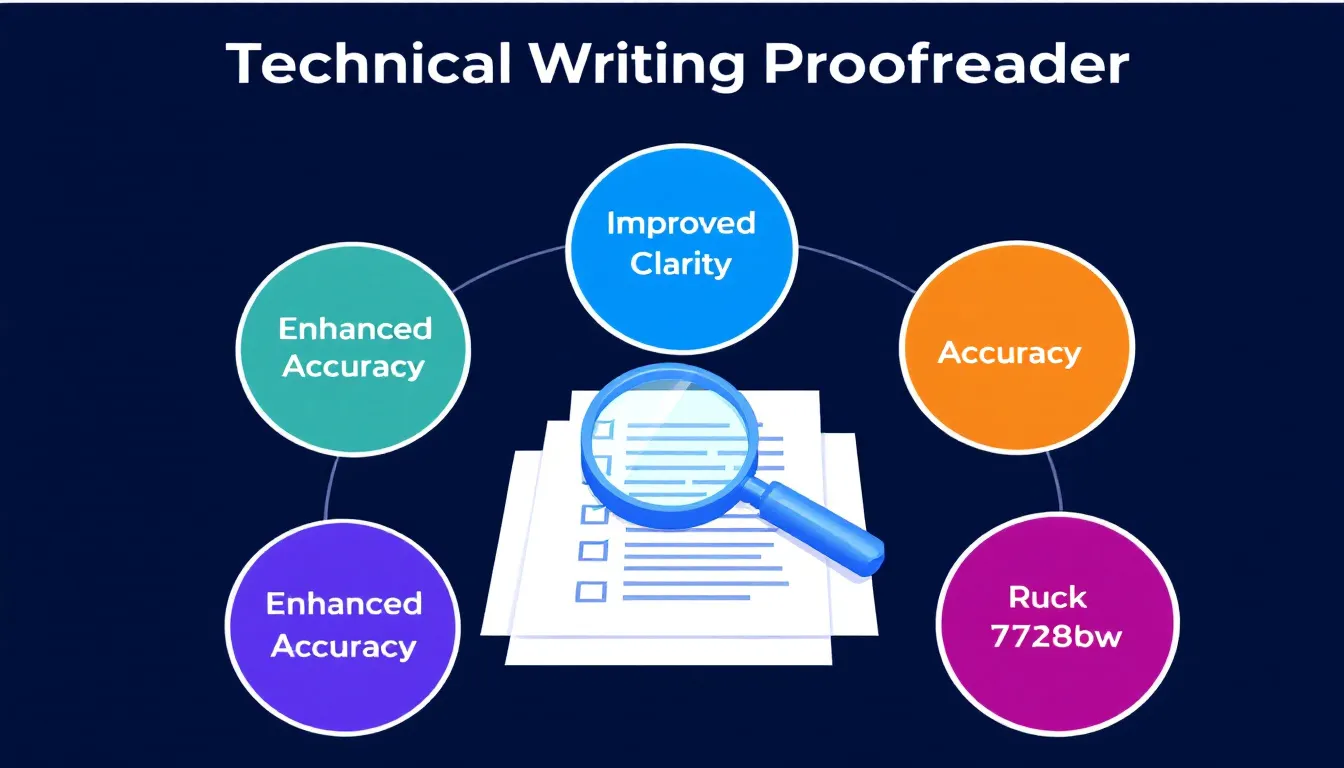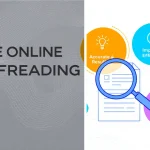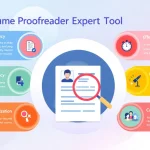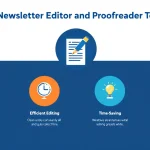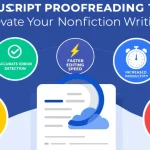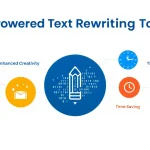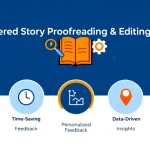Is this tool helpful?
How to Use the Technical Writing Proofreader and Improvement Tool Effectively
Step-by-Step Guide
Follow these steps to make the most of our Technical Writing Proofreader and Improvement Tool:
- Input Your Text: In the first field labeled “The piece of text to be proofread and improved,” paste or type the technical content you want to enhance. For example, you could input:
- “The new software update includes several bug fixes and performance enhancements. Users can expect improved loading times and smoother navigation between screens. The update also introduces a new feature that allows for real-time collaboration on documents.”
- Specify Target Audience (Optional): In the “Target Audience” field, indicate who the content is intended for. This helps tailor the language and complexity level. For instance:
- “IT professionals with intermediate knowledge of cloud computing”
- Define Specific Focus Areas (Optional): Use the “Specific Focus” field to highlight particular aspects you want the tool to emphasize. For example:
- “Improve clarity of technical terms and enhance overall readability”
- Submit for Processing: Click the “Proofread and Improve Text” button to initiate the analysis.
- Review Results: Once processing is complete, examine the improved text displayed in the results section.
- Copy and Use: If satisfied with the improvements, use the “Copy to Clipboard” button to easily transfer the enhanced content for your use.
Revolutionizing Technical Writing: Your AI-Powered Proofreader and Improvement Tool
In the fast-paced world of technology, clear and precise communication is paramount. Our Technical Writing Proofreader and Improvement Tool is designed to elevate your technical documentation to new heights of clarity, accuracy, and effectiveness. This cutting-edge tool harnesses the power of artificial intelligence to analyze your text, identify areas for improvement, and suggest enhancements that align with best practices in technical writing.
What Sets Our Tool Apart?
- Specialized Focus: Unlike generic grammar checkers, our tool is specifically tailored for technical writing, understanding the unique challenges and requirements of this specialized field.
- Audience-Centric Approach: By allowing you to specify your target audience, the tool ensures that the language and complexity of your content are perfectly pitched for maximum comprehension.
- Customizable Improvements: The option to define specific focus areas gives you control over which aspects of your writing receive the most attention.
- Time-Saving Efficiency: What might take hours of manual proofreading and revision can be accomplished in minutes, freeing up valuable time for other critical tasks.
The Benefits of Using Our Technical Writing Improvement Tool
1. Enhanced Clarity and Precision
Technical writing demands crystal-clear communication. Our tool meticulously analyzes your text to eliminate ambiguities, refine complex explanations, and ensure that every sentence serves its purpose effectively. By enhancing clarity, your documentation becomes more accessible and valuable to your readers.
2. Improved Readability and Engagement
Even the most complex technical concepts can be presented in an engaging manner. The tool suggests improvements to sentence structure, paragraph organization, and overall flow, making your content more digestible and engaging for your audience. This increased readability can lead to better retention of information and more positive user experiences.
3. Consistency in Style and Terminology
Maintaining consistency across technical documents is crucial for professionalism and clarity. Our tool helps standardize terminology, formatting, and style choices throughout your text, ensuring a cohesive and polished final product.
4. Time and Resource Efficiency
Manual proofreading and improvement of technical documents can be incredibly time-consuming. By automating much of this process, our tool allows technical writers and teams to focus their energy on content creation and more complex editing tasks, significantly boosting productivity.
5. Customized Learning and Improvement
As you use the tool, you’ll gain insights into common areas for improvement in your writing. This feedback loop can help you develop your skills as a technical writer, leading to long-term improvements in your documentation quality.
Addressing User Needs: Solving Common Technical Writing Challenges
Challenge 1: Simplifying Complex Concepts
Technical writers often struggle with explaining intricate concepts in a way that’s accessible to their target audience. Our tool addresses this by suggesting alternative phrasings and structures that break down complexity without sacrificing accuracy.
Example: Consider the following original text:
“The quantum entanglement phenomenon involves the correlation of quantum states between multiple particles, regardless of the spatial separation between them, leading to instantaneous changes in the entangled system upon measurement of one particle.”
Our tool might suggest an improvement like this:
“Quantum entanglement is a fascinating phenomenon where two or more particles become ‘linked.’ Even when separated by large distances, these particles remain connected. When you measure one particle, it instantly affects the others in the entangled system, regardless of how far apart they are.”
Challenge 2: Maintaining Consistent Terminology
Inconsistent use of technical terms can confuse readers and undermine the credibility of your documentation. Our tool identifies instances of inconsistent terminology and suggests standardized alternatives.
Example: In a document about networking, you might use “router,” “gateway,” and “access point” interchangeably. The tool would flag this inconsistency and recommend sticking to one term, explaining the distinctions if necessary.
Challenge 3: Eliminating Redundancy and Verbosity
Technical documents often become bloated with unnecessary repetition or overly wordy explanations. Our tool identifies these issues and suggests more concise alternatives that maintain the essential information.
Example: Original text:
“The process of installing the software involves a series of steps that must be followed in a specific order and sequence to ensure proper installation and functionality of the program on your computer system.”
Improved version:
“To ensure proper functionality, follow these steps in order when installing the software on your computer.”
Practical Applications: Real-World Use Cases
1. Software Documentation
For software developers and technical writers creating user manuals, API documentation, or release notes, our tool can ensure that instructions are clear, consistent, and user-friendly. It can help simplify complex coding concepts for a general audience or maintain precise technical language for developer-focused documentation.
2. Scientific Research Papers
Researchers can use the tool to refine their academic writing, ensuring that complex scientific concepts are explained clearly without losing their technical accuracy. This can be particularly useful when preparing papers for interdisciplinary audiences or for journals that emphasize accessibility of research.
3. Technical Marketing Materials
Marketing teams working on technical products can leverage the tool to create compelling yet accurate product descriptions, white papers, and case studies. The tool can help strike the right balance between technical detail and persuasive language, making complex products more appealing to potential customers.
4. Educational Content
Educators and e-learning content creators can use the tool to develop clear, engaging technical lessons and tutorials. Whether it’s explaining mathematical concepts, scientific theories, or technical processes, the tool can help make educational content more accessible and effective for students.
5. Legal and Compliance Documents
In industries where technical documentation intersects with legal requirements, such as in pharmaceutical or financial sectors, our tool can help ensure that technical specifications and compliance information are presented clearly and accurately, reducing the risk of misinterpretation.
Frequently Asked Questions (FAQ)
Q1: Can this tool replace human proofreaders entirely?
A1: While our tool is highly advanced, it’s designed to complement rather than replace human expertise. It excels at identifying common issues and suggesting improvements, but the final decision on content should always involve human judgment, especially for highly specialized or context-dependent writing.
Q2: How does specifying the target audience affect the tool’s suggestions?
A2: When you specify the target audience, the tool adjusts its suggestions to match the expected knowledge level and interests of that group. For example, content for a general audience might receive suggestions for simpler language and more explanations, while content for experts might retain more technical terminology.
Q3: Can I use this tool for languages other than English?
A3: Currently, our tool is optimized for English technical writing. We’re exploring options to expand to other languages in the future, but for now, it’s best suited for English-language content.
Q4: How does the tool handle industry-specific jargon?
A4: The tool has a broad knowledge base of technical and industry-specific terms. However, when you use the “Specific Focus” field to indicate your industry or subject area, it can tailor its suggestions more accurately to your specific field, helping to maintain necessary technical language while improving overall clarity.
Q5: Is there a limit to how much text I can process at once?
A5: Our tool is designed to handle substantial amounts of text, suitable for most technical documents. However, for very large documents, you might find it more effective to process sections separately for more focused improvements.
Q6: How can I integrate this tool into my existing writing workflow?
A6: Many users find it helpful to use our tool as a final step in their writing process, after they’ve completed their initial draft and basic revisions. You can also use it iteratively throughout your writing process to get suggestions on specific sections as you go.
Q7: Does the tool check for plagiarism?
A7: While our tool focuses on improving the quality and clarity of your writing, it does not include a plagiarism checker. We recommend using a separate plagiarism detection tool if this is a concern for your content.
Q8: Can the tool help with formatting and structure suggestions?
A8: Yes, the tool can provide suggestions for improving the overall structure and formatting of your document to enhance readability. This includes recommendations for breaking up long paragraphs, adding subheadings, or using bullet points for lists.
Q9: How often is the tool updated with new features or improvements?
A9: We continuously work on improving our tool based on user feedback and advancements in natural language processing. While we don’t have a fixed schedule for updates, we regularly release new features and refinements to enhance the tool’s capabilities.
Q10: Can I save or track my improvement history using this tool?
A10: Currently, the tool provides immediate improvements without saving a history of changes. We recommend saving different versions of your document manually if you want to track changes over time. We’re considering adding a change tracking feature in future updates.
By leveraging our Technical Writing Proofreader and Improvement Tool, you’re not just enhancing individual documents – you’re investing in the overall quality and effectiveness of your technical communication. Whether you’re a seasoned technical writer, a subject matter expert tasked with documentation, or a student learning the ropes of technical writing, this tool can be an invaluable asset in your quest for clear, precise, and impactful technical content.
Important Disclaimer
The calculations, results, and content provided by our tools are not guaranteed to be accurate, complete, or reliable. Users are responsible for verifying and interpreting the results. Our content and tools may contain errors, biases, or inconsistencies. We reserve the right to save inputs and outputs from our tools for the purposes of error debugging, bias identification, and performance improvement. External companies providing AI models used in our tools may also save and process data in accordance with their own policies. By using our tools, you consent to this data collection and processing. We reserve the right to limit the usage of our tools based on current usability factors. By using our tools, you acknowledge that you have read, understood, and agreed to this disclaimer. You accept the inherent risks and limitations associated with the use of our tools and services.
